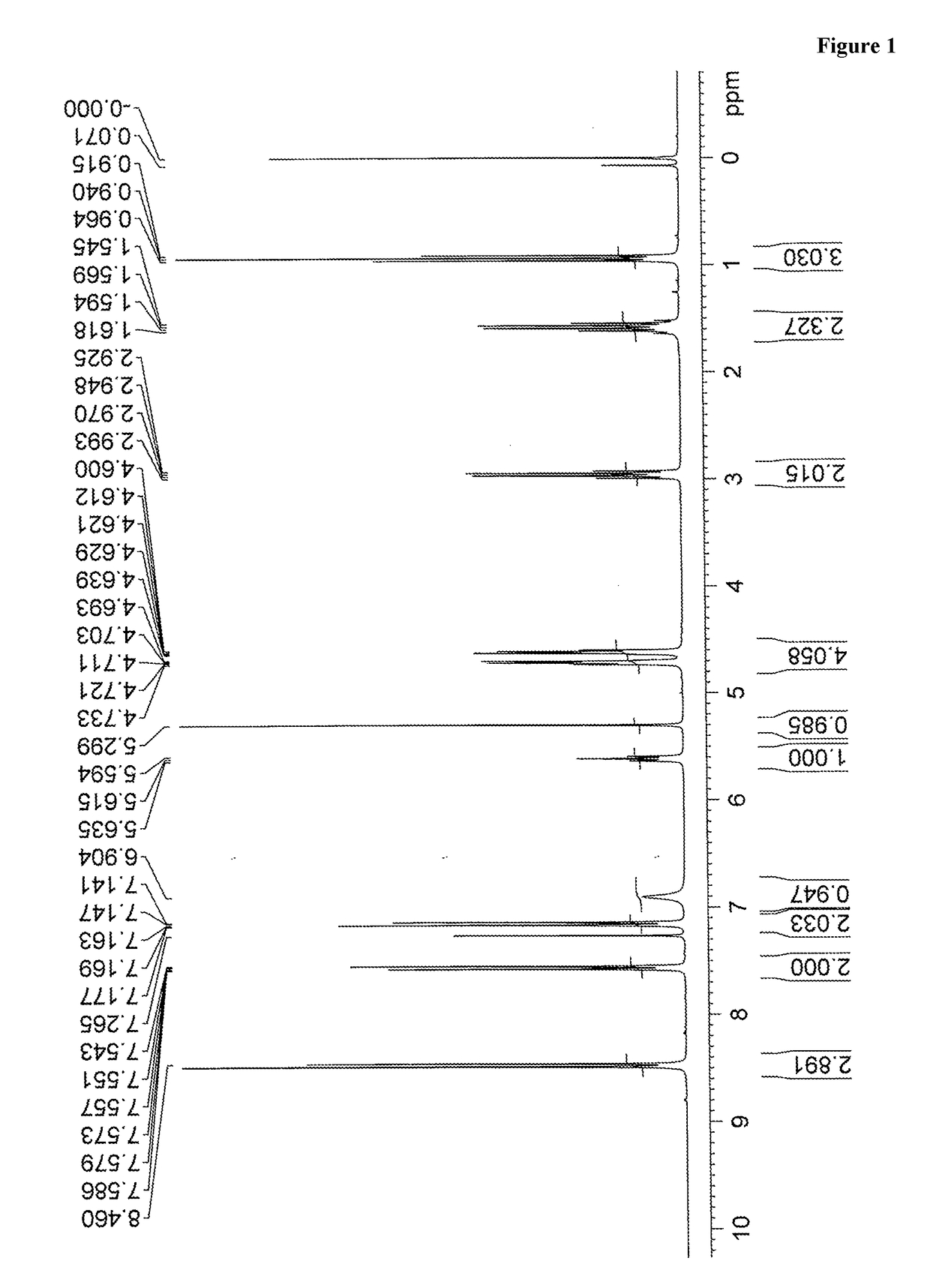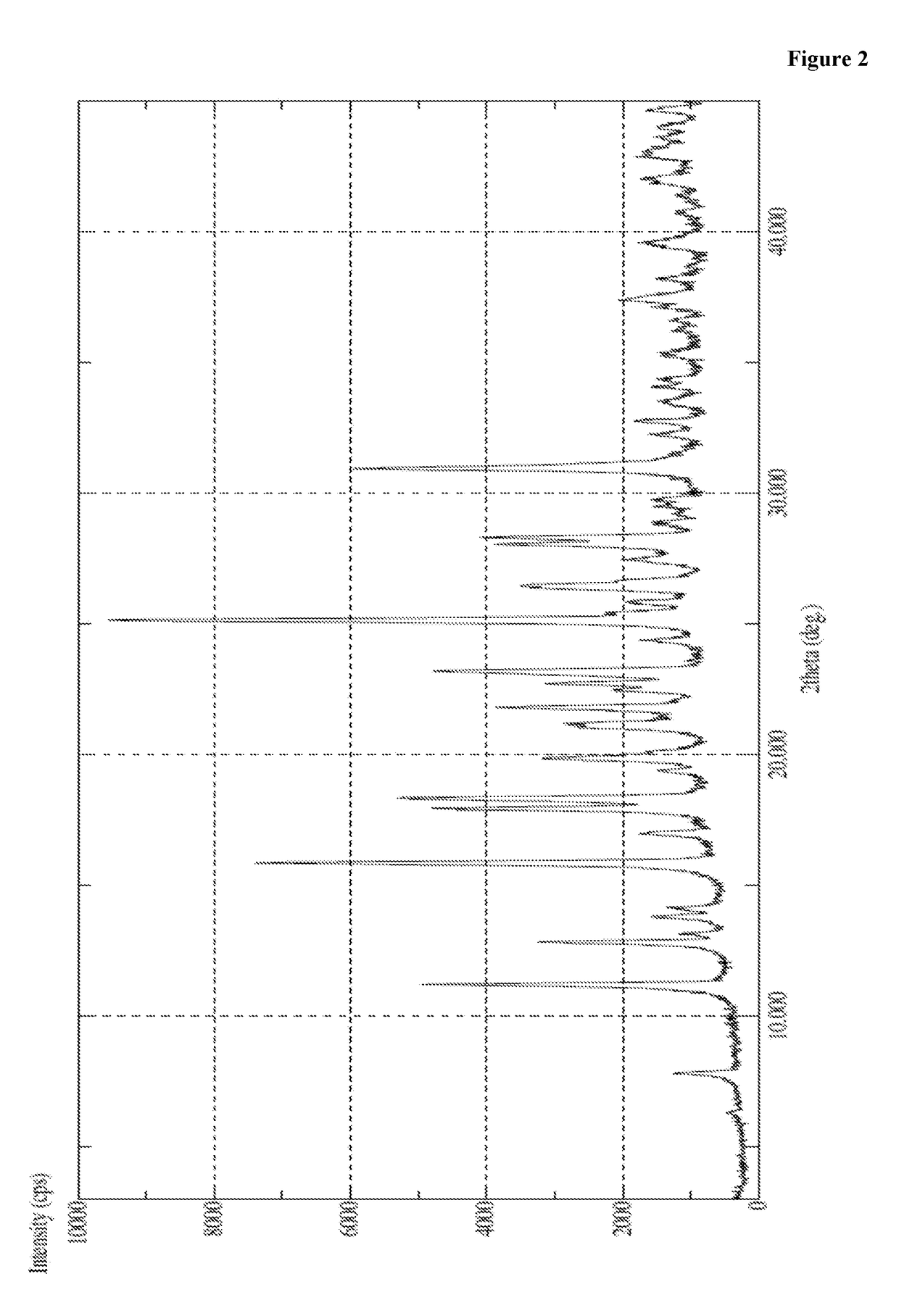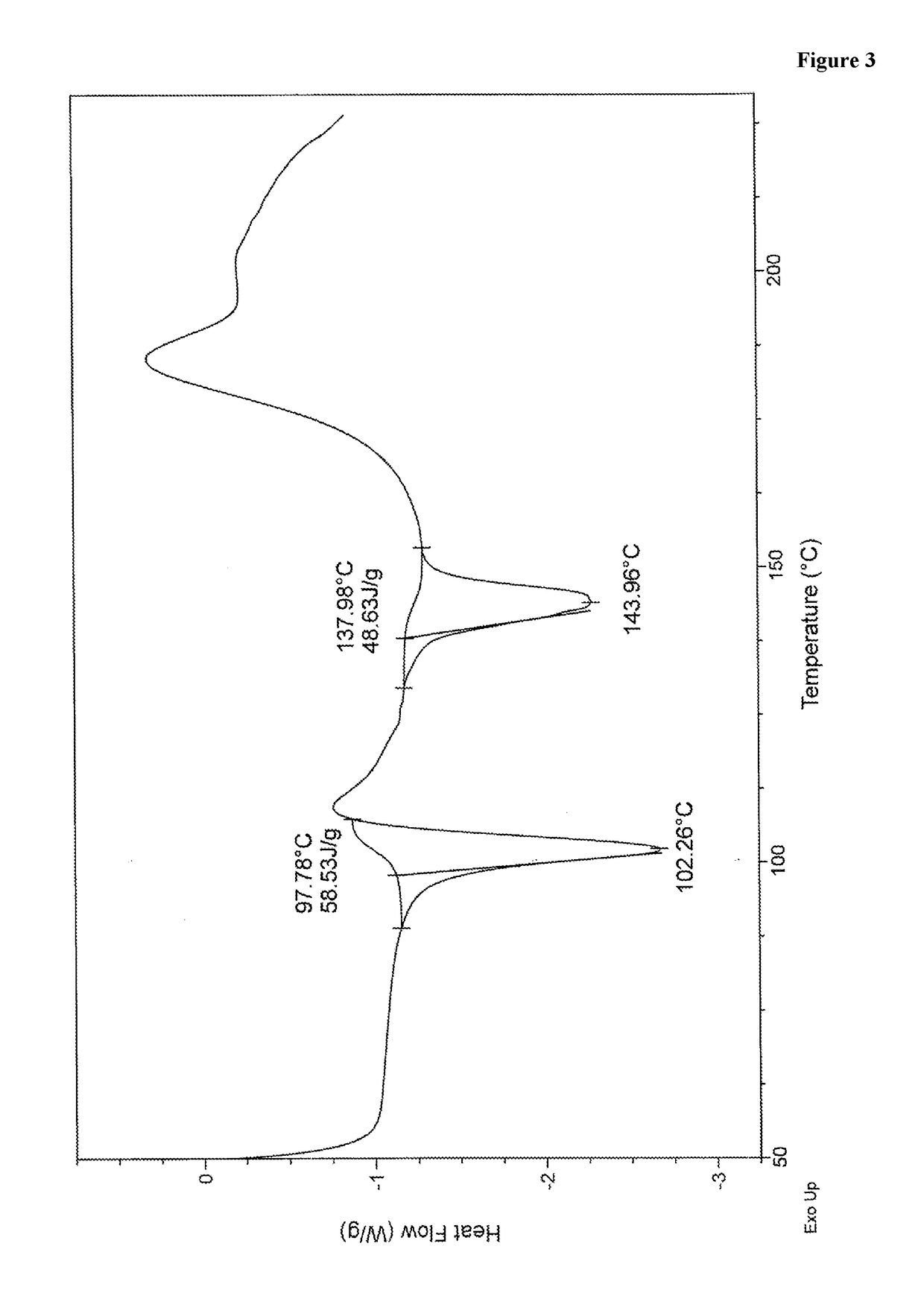An improved process for the preparation of macitentan
a technology of macitentan and macitene, which is applied in the field of improved process for the preparation of macitene, can solve the problems of high flammability of sodium hydride, easy to ignite in air, and difficult to remov
- Summary
- Abstract
- Description
- Claims
- Application Information
AI Technical Summary
Benefits of technology
Problems solved by technology
Method used
Image
Examples
example-1
on of 2-(4-bromophenyl) malonic acid dimethyl ester (Formula IIIa)
[0141]To a solution of 4-bromophenylacetic acid (100 g) in methanol (500 mL), thionyl chloride (40 mL) was added at 0-5° C. under nitrogen atmosphere. The temperature of the reaction mass was raised to 25-30° C. and stirred for 30 mins. The solvent from the reaction mass was distilled off completely under vacuum at 40-45° C. The obtained mass was dissolved in ethyl acetate (500 mL) at 25-30° C. and then washed with 5% aqueous sodium bicarbonate, water followed by 35% aqueous sodium chloride solution. The organic and aqueous layers were separated and the separated organic layer was dried over anhydrous sodium sulphate. The organic layer was filtered, washed with ethyl acetate and the solvent from filtrate was distilled off completely under vacuum at 45-50° C. The obtained residue and dimethyl carbonate (159.6 mL) in tetrahydrofuran (400 mL) was slowly added to a mixture of tetrahydrofuran (600 mL) and sodamide (54.4 g)...
example-2
on of 2-(4-bromophenyl) malonic acid dimethyl ester (Formula IIIa)
[0142]To a solution of 4-bromophenylacetic acid (100 g) in methanol (500 mL), thionyl chloride (40 mL) was added at 0-5° C. The temperature of the reaction mass was raised to 25-35° C. and stirred for 30 mins. The solvent from the reaction mass was distilled off completely under vacuum at 40-45° C. The obtained mass was dissolved in ethyl acetate (500 mL) at 25-30° C. and then washed with 5% aqueous sodium bicarbonate, water followed by 35% aqueous sodium chloride solution. The organic and aqueous layers were separated and organic layer was dried over anhydrous sodium sulphate. The organic layer was filtered, washed with ethyl acetate and the solvent from filtrate was distilled off completely under vacuum at 45-50° C. The obtained residue was dissolved in tetrahydrofuran (400 mL) at 25-35° C. and dimethyl carbonate (159.6 mL) was added to it. The obtained reaction mass was added to mixture of sodamide (54.4 g) in tetr...
example-3
on of 5-(4-bromophenyl)-pyrimidine-4,6-diol (Formula IV)
[0143]A solution of 2-(4-bromophenyl) malonic acid dimethyl ester (Formula III) (100 g) in methanol (1500 ml) was added to pre-cooled 25% sodium methoxide solution in methanol (240 mL) at 0-5° C. over a period of 60 mins under nitrogen atmosphere and stirred for 15 mins. Formamidine acetate (47.1 g) was added at 0-5° C. Then reaction mass temperature was raised to 25-30° C. and stirred for 6 hrs Aqueous hydrochloric acid (2N, 1000 mL) was added to the reaction mass at 25-30° C. for 90 mins, cooled to 0-5° C. and stirred for 30 mins. The pH of the reaction mass was adjusted to 4 using aqueous sodium hydroxide at 0-5° C. and stirred for 15 mins. The solid obtained was filtered, washed with water followed by acetone and suck dried. Acetone (300 mL) was added to the wet compound and stirred for 1 hr at 25-35° C. The reaction mass was filtered, washed with acetone and dried at 60-65° C. for 12 hrs to get the title compound.
[0144]Yie...
PUM
 Login to View More
Login to View More Abstract
Description
Claims
Application Information
 Login to View More
Login to View More - R&D
- Intellectual Property
- Life Sciences
- Materials
- Tech Scout
- Unparalleled Data Quality
- Higher Quality Content
- 60% Fewer Hallucinations
Browse by: Latest US Patents, China's latest patents, Technical Efficacy Thesaurus, Application Domain, Technology Topic, Popular Technical Reports.
© 2025 PatSnap. All rights reserved.Legal|Privacy policy|Modern Slavery Act Transparency Statement|Sitemap|About US| Contact US: help@patsnap.com



